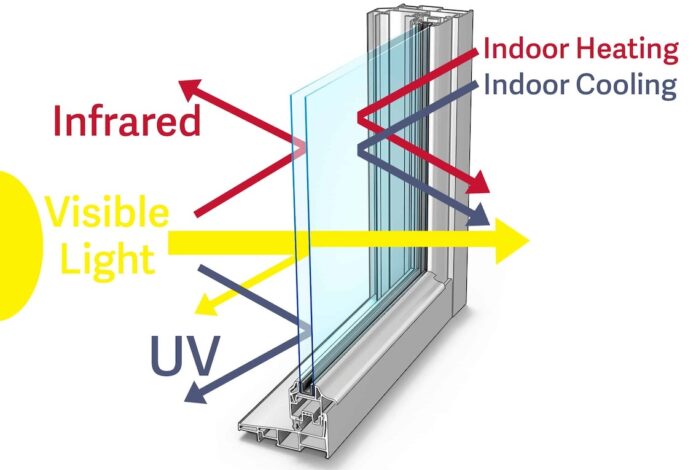
Window & Glass Association NZ technical communications manager Alex Wung says low emissivity glass has become more suitable for use in residential dwellings in recent years.
On November 29, 2021, the Ministry for Building, Innovation and Employment (MBIE) released one of the biggest updates in building energy efficiency in over a decade — the 5th edition of Clause H1 of the Building Code.
The update included a series of new climate zones across the country, and an increase in the thermal performance requirements of building elements.
As we fully transition into the changes, the use of low emissivity, or Low-E, glass has drawn increased attention throughout the industry.
Low-E glass has been available commercially since the early 1980s, but has seen increased use in recent years as its performance and cost has become more suitable for use in residential dwellings.
The insulating properties behind Low-E glass’s increased thermal performance arise from a factory-applied reflective material coating onto the glass.
This coating is a transparent, faintly coloured layer of a mix of metals, including silver, tin, zinc and/or other metal oxides and nitrates.
The nature and combination of these metal compounds has been chosen for their ability to reflect light, rather than absorb it, so the overall effect is a reduction in the transfer of heat by radiation.
Low-E coatings come in two types, hard coat and soft coat. Hard coat Low-E glass is produced through fusing the metal with the glass while the glass is still in its semi-molten state, which results in the coating being incorporated into the structure of the glass, making it very resilient.
The more common soft coat, or sputter-coating, is applied after the glass has already been manufactured, and the metal is deposited onto the surface inside a vacuum chamber.
Because the coating is “soft” it is not suitable for use in single-glazed windows as the coating is susceptible to scratching or oxidation from the atmosphere.
Instead, sputter-coated Low-E glass is incorporated into an insulating glass unit, or IGU. An IGU is made up of two or more panes of glass which are separated by an airspace.
To increase performance further, the air space can be filled with an inert gas called argon.
Twofold rationale
The rationale behind the design of this unit is twofold. With the Low-E coating positioned on either surface 2 or 3, inside the unit, it is protected against mechanical and chemical damage.
The second benefit is that this arrangement reduces heat loss from inside the building, while simultaneously regulating the entry of solar energy.
Not all Low-E coatings and glasses perform to the same level, and the differing make-ups of the coatings are accounted for in H1/AS1.
Glass performance is expressed as a U-value, whilst the thermal performance of a window or door as a whole unit, which includes its glazing, is specified as an R-value, in the same way insulation is rated.
In H1, Low-E of different ratings are generically designated with a subscript number of 1 through 4.
So an IGU including a pane of Low-E2 might have a U-value of approximately U1.6, whilst the same combination with a Low-E4 will have an increased performance rating of around U1.1.
The lower U-value indicates better thermal performance of the glazing.
Prior to the 5th edition of H1, window R-value requirements were R0.26.
A revamp of climate zones was included in this edition, dividing the country into six climate zones, requiring R-values of R0.46 for Climate Zones 1-4, and R0.50 for Climate Zones 5-6 moving forward.
Readily-achieved compliance
The use of Low-E glass and better frames provides a means to readily achieve compliance in all zones.
The composition of the Low-E IGU to use in buildings will depend on many things, including the frame the unit is installed into, the location/climate zone, the thermal performance of the remaining building elements and, ultimately, personal preference.
Equally, there are a range of compliance methods offered within H1. The Schedule Method is usually the first option to use in the industry, and provides thermal performance values selected from a Table.
The Calculation Method provides a more flexible approach, and compares the thermal performance of a reference building with that of the proposed building, allowing the architect/designer to balance the performance values across the building to achieve a desired heat loss outcome.
Here the flexibility of differing Low-E IGU combinations can be taken advantage of to deliver the best result for the client.
Low-E IGU’s are certainly an exciting prospect moving forward, and as technology in this area continues to develop, glazing will become more efficient.
As more homes are built, and the climate becomes increasingly unpredictable, the need for materials that can provide a comfortable living space for residents has never been more important.
The widespread use of Low-E glass in better performing windows will aid us in moving towards that goal.
Exciting indeed . . .



